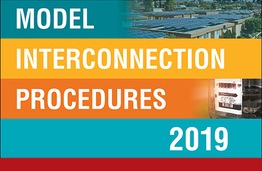New Paper Explores Vehicle-to-Grid Standards for Electric Vehicles
Transportation electrification is essential to helping states and the federal government achieve their energy and climate targets. Electric vehicles (EVs) can provide myriad benefits, from reduced air pollution and greenhouse gas emissions to vehicle-to-grid (V2G) services—in which electric vehicles can both charge from and send energy back to the grid, providing grid benefits.
Before V2G can be implemented across the country, states will have to navigate the evolving landscape of technical standards that govern the certification of V2G-enabled equipment and integrate these standards into their rules and technical documents.
IREC’s new paper, Paving the Way: Vehicle-to-Grid Standards for Electric Vehicles, provides the starting point for regulators and other stakeholders to begin that process and unlock the potential of V2G technology on the grid.

The paper introduces various V2G technologies and configurations, walking through a number of technical and regulatory challenges, and takes a deep dive into technical standards that govern V2G integration by looking through relevant existing and upcoming standards and communication protocols that can make V2G a reality.
Policymakers, manufacturers, utilities, and other stakeholders are exploring V2G implementation in at least seven states through pilot programs or discussions in regulatory proceedings. One of the initial challenges has been determining the current technical standards that may apply to V2G and any gaps that may exist.
This paper provides a brief overview of V2G, reviews the existing standards related to V2G, and identifies gaps that need to be addressed before it can be fully implemented.
As regulators and other stakeholders pursue V2G implementation in their states, this paper is intended to be used as a starting point for regulatory discussions related to the incorporation of V2G standards into interconnection rules.



